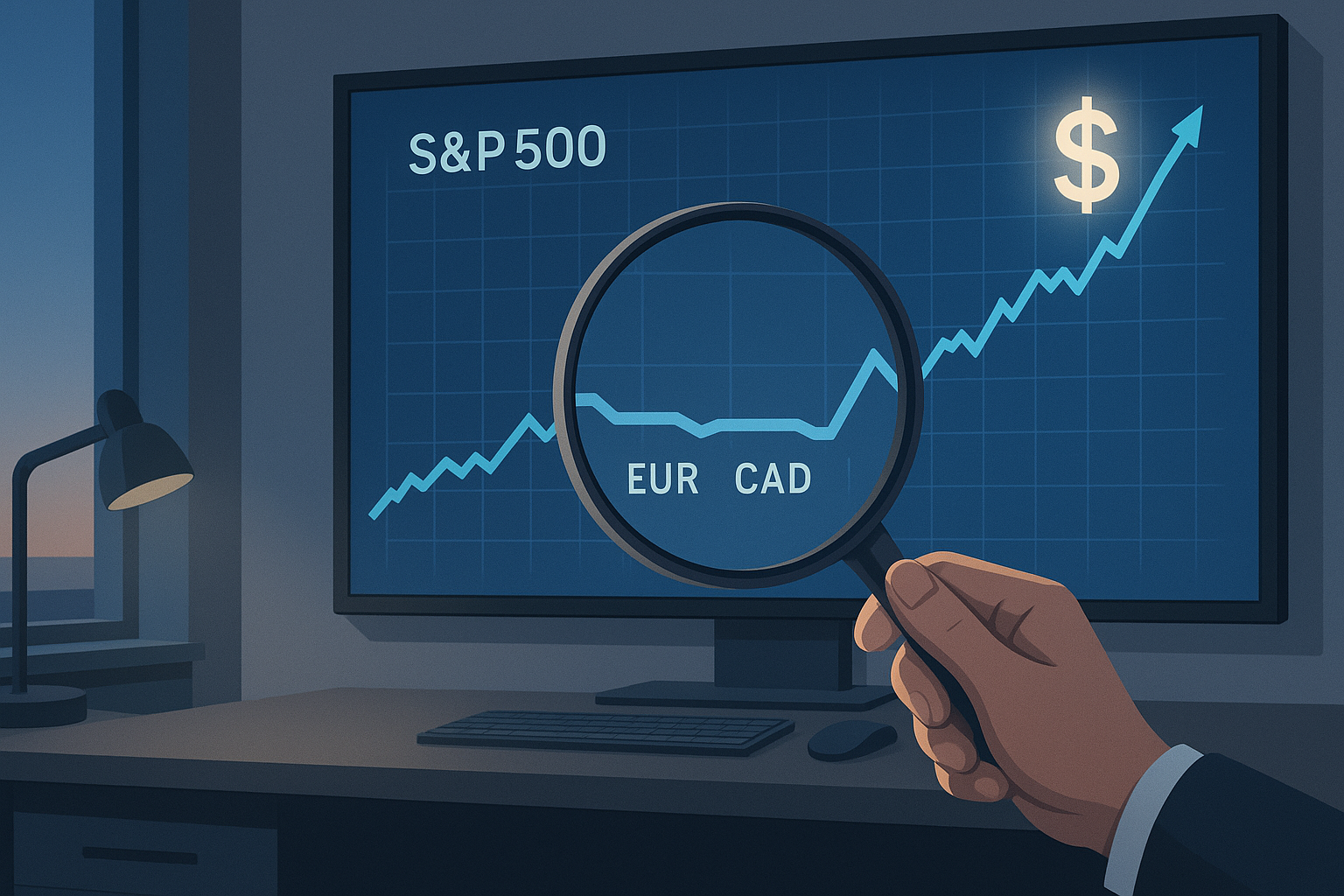I was nursing a mediocre Manhattan at one of those financial district networking events last Thursday when I overheard it again—that breathless excitement about "historic S&P highs" from a cluster of young analysts. You know the type: fresh MBAs with algorithmic trading apps and unwavering faith in American market supremacy.
What nobody at these gatherings ever seems to ask is the question that actually matters: What are those gains worth?
Because here's the inconvenient truth—the S&P's impressive climb looks considerably less impressive when you step outside the dollar bubble.
In Canadian dollars (and let's be honest, the loonie isn't exactly setting the currency world on fire), the much-celebrated S&P gains essentially evaporate into... well, nothing much at all. Flat. Stagnant. Underwhelming.
For European investors? It's even worse. Those tracking the S&P while hedging currency risk have watched their investments drop nearly 8% in euro terms. So much for American exceptionalism.
The problem is something financial journalists rarely address—what I've come to think of as "domestic currency tunnel vision." We evaluate market performance solely through our home currency lens, conveniently ignoring the global economic ecosystem in which these numbers actually exist.
It's ridiculous, really. Like bragging about winning your community theater award while failing to mention you bombed at the regional competition.
(I've been covering currency markets since 2018, and this selective amnesia happens every time the dollar strengthens.)
Look, I'm not saying the American economy is weak. Far from it. But context matters enormously when evaluating performance. A strengthening market coupled with a weakening currency creates an optical illusion—a statistical sleight of hand that masks the full picture.
What's happening?
The Fed's aggressive tightening cycle—perhaps the most dramatic in recent memory—has pulled capital toward dollar-denominated assets. This creates what appears to be exceptional performance... until you start converting those gains into other currencies.
Think of it this way. When Zimbabwe's stock market was technically "soaring" during their hyperinflation crisis, nobody considered those investors winners. The same principle applies here, just on a much less dramatic scale.
I spoke with three currency strategists last week who all emphasized the same point: Americans have a peculiar blindspot when it comes to evaluating their markets in global terms.
"It's like measuring your height with a rubber band and celebrating when you seem taller," one told me, requesting anonymity because their firm manages significant U.S. equities positions. "The measuring stick matters."
The financial press doesn't help. Every S&P high generates breathless headlines and breaking news alerts. Meanwhile, the dollar's relative performance against other major currencies gets buried in the back pages—if it's mentioned at all.
This denominator distortion has real consequences. International investors placing bets on American exceptionalism have received wildly different returns depending on their home currencies. An unhedged European investor has essentially been treading water despite all those "record high" notifications lighting up their phones.
Why does nobody talk about this?
Part of it is complexity—explaining currency effects doesn't make for sexy television. Another part is cultural—Americans have grown accustomed to viewing their markets as the center of the financial universe.
But perhaps the biggest factor is psychological. We prefer simple narratives about winning and losing rather than nuanced discussions about relative value and purchasing power parity.
So the next time someone at a cocktail party (or God forbid, a Zoom happy hour) starts waxing poetic about the unstoppable American market, ask them a simple question: "How's that S&P looking in yen these days?"
The blank stare you'll receive? Absolutely priceless.
Because in a global economy, what matters isn't just how high your market climbs—it's what those gains can actually buy when the counting's done.
